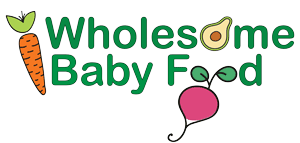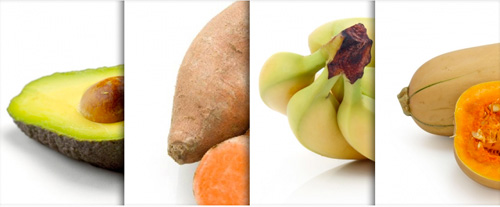As your baby gets older, she will go through a variety of stages and phases and reach many wonderful milestones. A few of these are feeding stages; with each of these you can expect different things to happen.
For example, you will encounter the “I want to feed myself!” stage and the refusal to eat stage. While each of the different feeding stages has its own challenges, remember that you are fostering and building healthy eating habits for your little one. This knowledge should help keep you moving happily forward, even if your baby refuses to eat her favorite food and you are cleaning up the fourth spilled bowl of yogurt and fruit in one day.
Keep in mind that the ages listed for each stage are ranges, and there is a fair amount of overlap between the ages for the different phases. It is impossible to pinpoint the specifics for all infants because as we noted, infants begin solid foods at differing ages and thus their progression into solid foods may differ greatly. Part II of this book provides plenty of easy and delicious recipes for you to try in each of these stages.
Babies 4-6 Months – Let’s Start Eating!
You have already read a bit about good first food choices and foods to avoid, now let’s talk a little about feeding. When baby is first starting solids, the food you offer should be relatively thin and a bit runny. Start out slowly and prepare one or two tablespoon-sized portions of whatever food you have chosen to start with. To take the edge off of his hunger, nurse or bottle feed before offering your little one solids.
Milk continues to be more important than any solid foods at this age. Some parents begin offering their babies solid foods by using their (clean and washed) finger as a spoon. They say that this helps their babies enjoy and take to solid foods more easily. They feel that introducing the “new” spoon and the “new” food all at once can confuse or overwhelm their baby.
Baby cereal and soft-cooked, thinly pureed fruits and veggies should be baby’s first solid food experiences. Offer your baby single ingredients only and offer them at a space of 3-4 days apart (remember the “3-4 -Day Wait Rule”) when introducing each new food. You may skip the cereal and begin with a fruit like avocado or begin with a veggie like butternut squash or sweet potato.
Babies 6-8 Months – We’re Moving On!
If your 6-8 month old baby is just starting solids, the food you offer should still be relatively thin and a bit runny. Again, start slowly and prepare one or two tablespoon-sized portions of whatever food you have chosen to start with. (Note: There are many parents who are now choosing to skip purees and use a “Baby Led Weaning” method for introducing solid foods. Your baby might be crawling and trying to pull herself up as she nears 8 months old. At this stage, your baby may suddenly refuse to eat. If she has been eating like a champ, you may wonder if you’re raising a picky eater. Don’t worry: at this stage baby is simply too busy exploring her world to stop and eat. In fact, she may get quite miffed when you put her in her highchair to have a meal.
With her independence growing, she may also begin to show preferences for certain foods and may start refusing to be spoon fed. Why not give her the spoon and let her start to practice? Take heart — this stage of baby feeding, while quite challenging, will soon pass. Let your baby be your guide and try not to get frustrated. It’s important for her to feel that she has some say in which foods she eats, so offer a healthy variety and rest assured she will get everything she needs.
This age/stage also ushers in the dawn of spices, textures and adventure. Start cooking with some spices and slowly add softly mashed or chopped bits of fruits, vegetables and meats. Remember, baby will not have molars until sometime around the 12 month age range. Foods should be easily squished between the gums. If you haven’t done so yet, try offering raw fruits (pureed or mashed and carefully peeled, pitted, seeded as needed) at this stage.
While you may have already introduced yogurt, cottage cheese makes a great addition to baby’s diet. Try my recipe for Cottage Peaches on page 165 of the book or here. This is also a great time to try pasta and a myriad of grains such as quinoa and kamut that are super tasty and nutritious. Pasta, veggies, and fruit should all be soft cooked and possibly mashed with a fork or masher. Meats and proteins such as egg yolk should be cooked and pureed or chopped into small soft bits. If offering tofu, you need not cook it first.
Babies 8 months and up – We’re Almost Toddlers Now and We Want Grown-up Foods!
By this age/stage, your baby is just on the brink of, or may already be, eating “table foods.” He may already love self-feeding and may enjoy a variety of tasty spices and textures in his cuisine. Try my popular “Apple Turkey Loaf or Sticks” recipe that I created way back in 2004 when I first started this site. It’s also on page 275 of the book. The recipe is a great combination of protein, vegetables, fruits and spices.
Now is a great time to encourage a healthy exploration of new foods, tastes and textures as well as eating utensils.
At this time, your baby has likely found a few favorite foods. He may also have developed a preference for feeding himself and a distaste for thin runny purees. As with the 6-8 month old baby, he may suddenly refuse to eat, but it is rarely a cause for concern. He’s simply too busy playing and exploring to stop and eat. Trust your baby’s hunger instincts and watch his cues; babies will never starve themselves, so don’t worry about this refusal to eat too much!
With his independence growing, baby may begin to show a very strong preference for certain foods and may even start refusing anything but his favorite foods. Continue to expand his palate by offering new foods and flavors and don’t get stressed about how much is being eaten. Experiment with new spices and new flavorful combinations, like the Dirty Rice. Offer your budding foodie a yummy chicken curry or tasty fish, for example! (An all-time favorite Simple Fantastic Fish, is on page 222).
Now that you have read all about introducing solids, the various first food choices and stages of progression, it’s time to actually feed your baby. Just remember: take it slow, keep it simple and have fun! Your baby will make all kinds of faces that you may not have seen before and you will probably go through the motions of scraping the food off her chin and back into her mouth quite a few times (not to mention off the high chair, the floor, your clothes, …).
Keep your cool and your sense of humor – it can come in very handy. Many parents like to capture these moments in photos so have your camera ready as well. Lights, camera, action!
[/fusion_text][fusion_text columns=”” column_min_width=”” column_spacing=”” rule_style=”default” rule_size=”” rule_color=”” hide_on_mobile=”small-visibility,medium-visibility,large-visibility” class=”” id=””]

